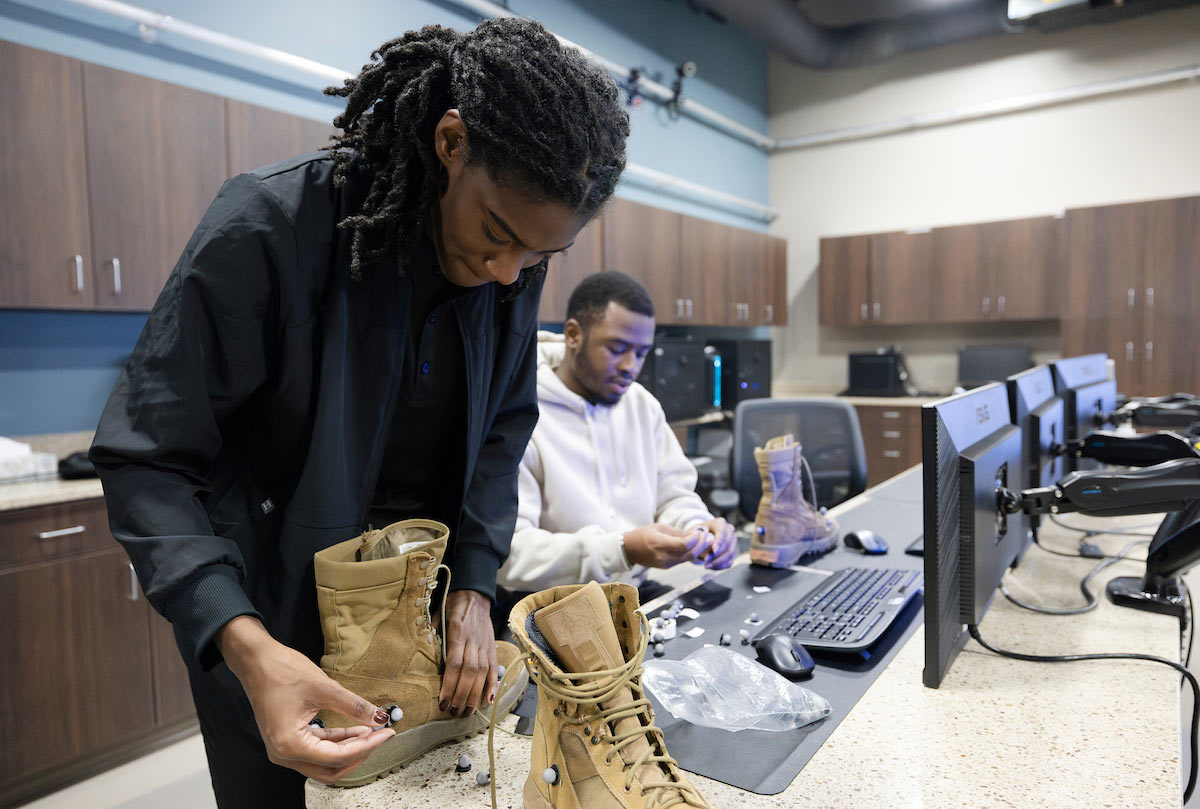Can Exoskeleton-Resisted Training Improve Walking in Stroke Survivors?
UNO graduate student, Sangwon ‘Eric’ Shin, is researching a training program with an exoskeleton suit to help stroke survivors improve their gait, with the support of a prestigious American Heart Association fellowship.
- published: 2025/05/08
- contact: Bella Lockwood-Watson - Office of Strategic Marketing and Communications
- email: unonews@unomaha.edu

While "exoskeleton suit" may bring to mind high-tech heroes like Iron Man, recent research reveals how simpler versions of this technology could become more accessible, potentially changing in the lives of everyday people. A University of Nebraska at Omaha (UNO) graduate student is conducting a research study investigating walking training programs with a device designed to boost walking mobility and independence for stroke survivors.
➡️ What’s new: Sangwon "Eric" Shin, a graduate student in biomechanics at UNO, has received an American Heart Association (AHA) Predoctoral Fellowship to explore innovative stroke rehabilitation methods. His research focuses on comparing different training methods to understand what the optimal way is to train with the exosuit.
💡 Why it matters: Strokes affect nearly 800,000 Americans annually, leaving many survivors with lasting issues, such as difficulty walking and an increased risk of falls.
🔎 Zoom in:
-
Shin’s research investigates the possibility of improving these rehabilitation outcomes through exercising with a simple but potentially very accessible device. This accessibility is crucial, especially for people living in rural areas where clinics are far away.
-
The exoskeleton suit looks like a textile garment fitted with springs and could offer a practical and effective solution for stroke rehabilitation.
-
Shin’s research will investigate whether training with the exosuit improves mobility or whether there is no benefit at all.
-
He will also test whether training on a treadmill or overground produces better results for stroke survivors. By understanding how to train most effectively with the device, the project could potentially enhance rehabilitation strategies across the country.
🎤 What they’re saying: “The goal of our research is to improve the independence of stroke survivors,” Shin explained. “Through this fellowship, we hope to create better training protocols that help survivors walk better.”
🌎 The big picture: Shin his AHA project supports ongoing work with Malcolm, Van den Berghe and Mukherjee researching different exosuits and exercise programs with these devices at the homes of stroke survivors. This research is part of UNO’s broader mission to improve public health, especially in underserved areas.
⚡ What’s next:
-
The research team is currently running studies at the homes of stroke survivors, all with the goal of making the research even more accessible to the stakeholder – the stroke survivors.
-
If you are a stroke survivor and are interested in participating in ongoing research studies, please email unoteammalcolm@unomaha.edu or call 402.915.0984. Participating in these training studies may provide benefits or not provide benefits at all.
This Boot Could Help Soldiers Heal Faster and Stay in the Fight
August 6, 2025
UNO researchers are reinventing combat footwear with the “FlyBand ExoBoot” designed to prevent ankle injuries and speed recovery.

About the University of Nebraska at Omaha
Located in one of America’s best cities to live, work and learn, the University of Nebraska at Omaha (UNO) is Nebraska’s premier metropolitan university. With more than 15,000 students enrolled in 200-plus programs of study, UNO is recognized nationally for its online education, graduate education, military friendliness and community engagement efforts. Founded in 1908, UNO has served learners of all backgrounds for more than 100 years and is dedicated to another century of excellence both in the classroom and in the community.
Follow UNO on Facebook, Twitter (X), Instagram, LinkedIn, and YouTube.